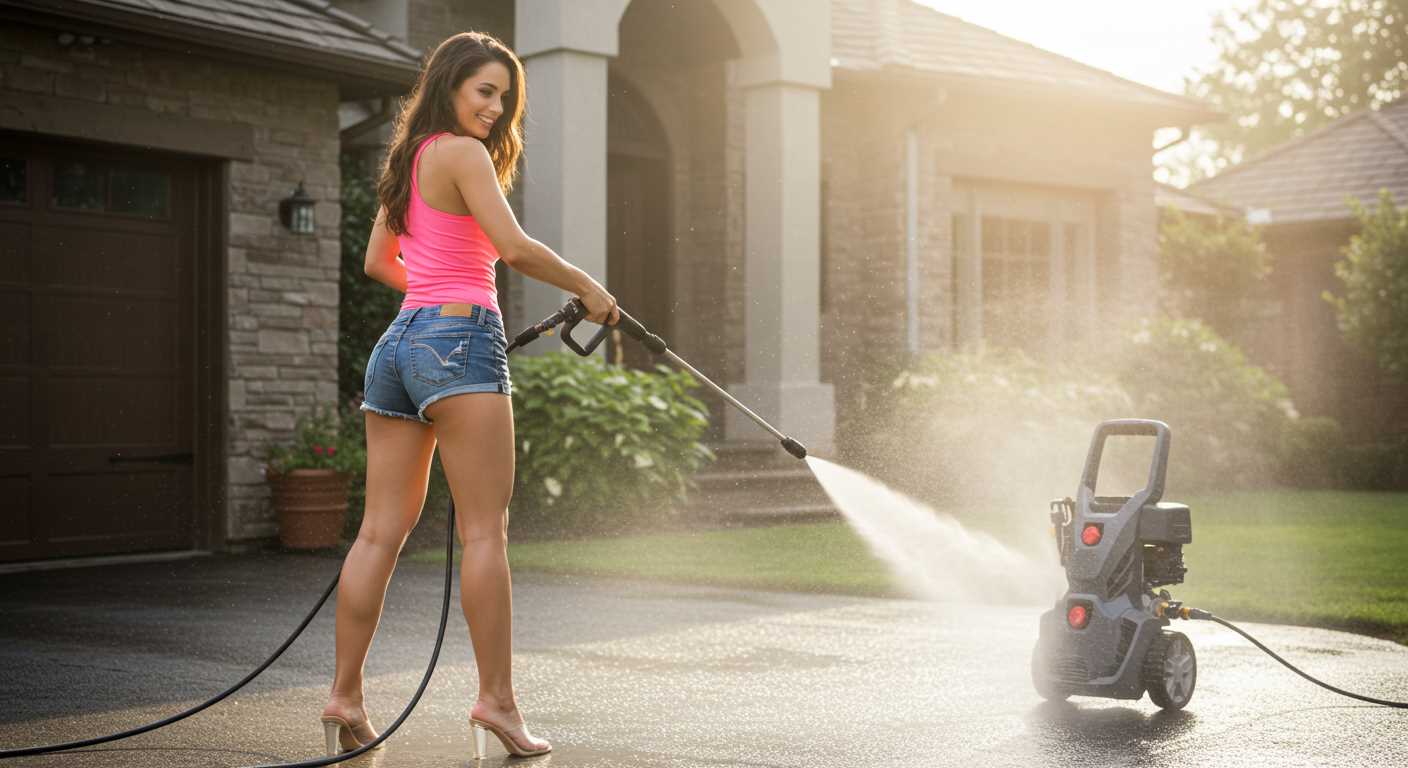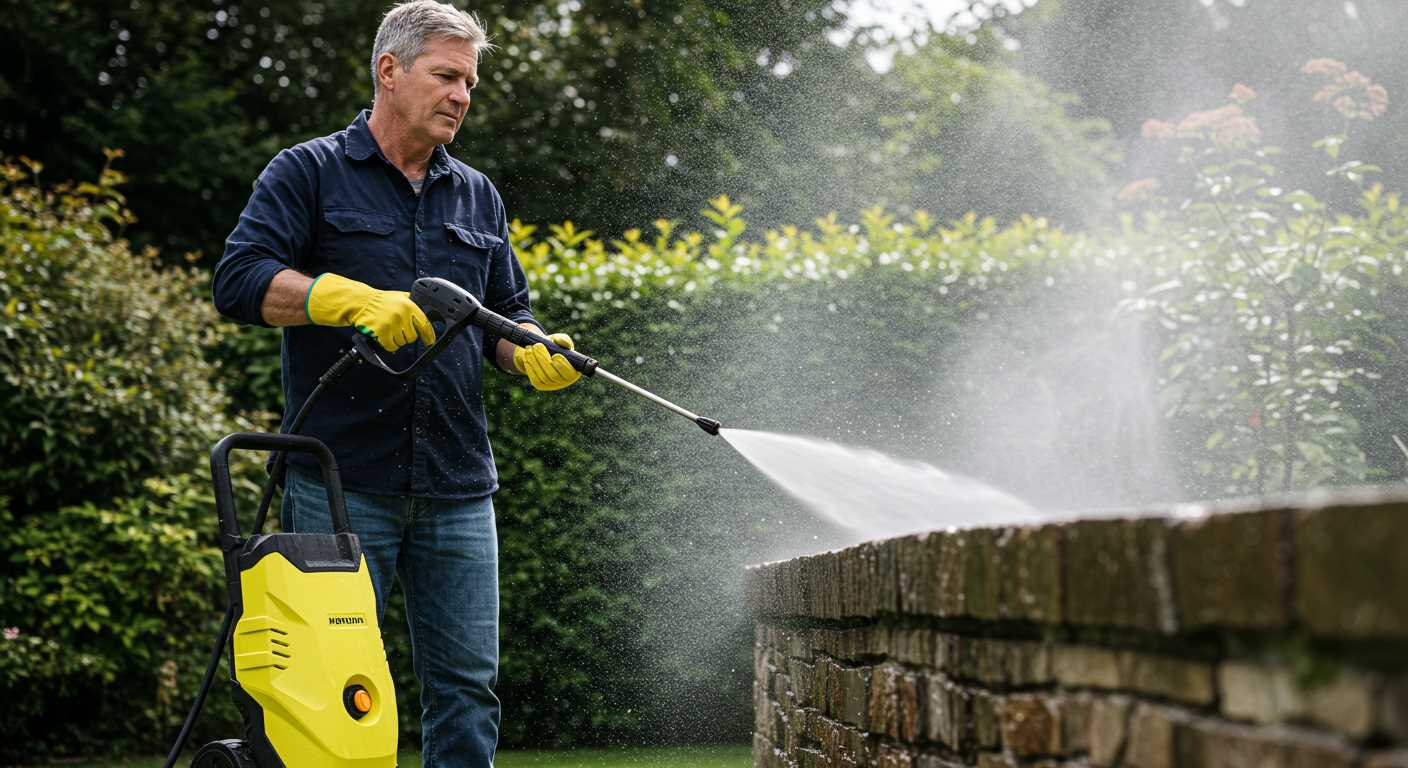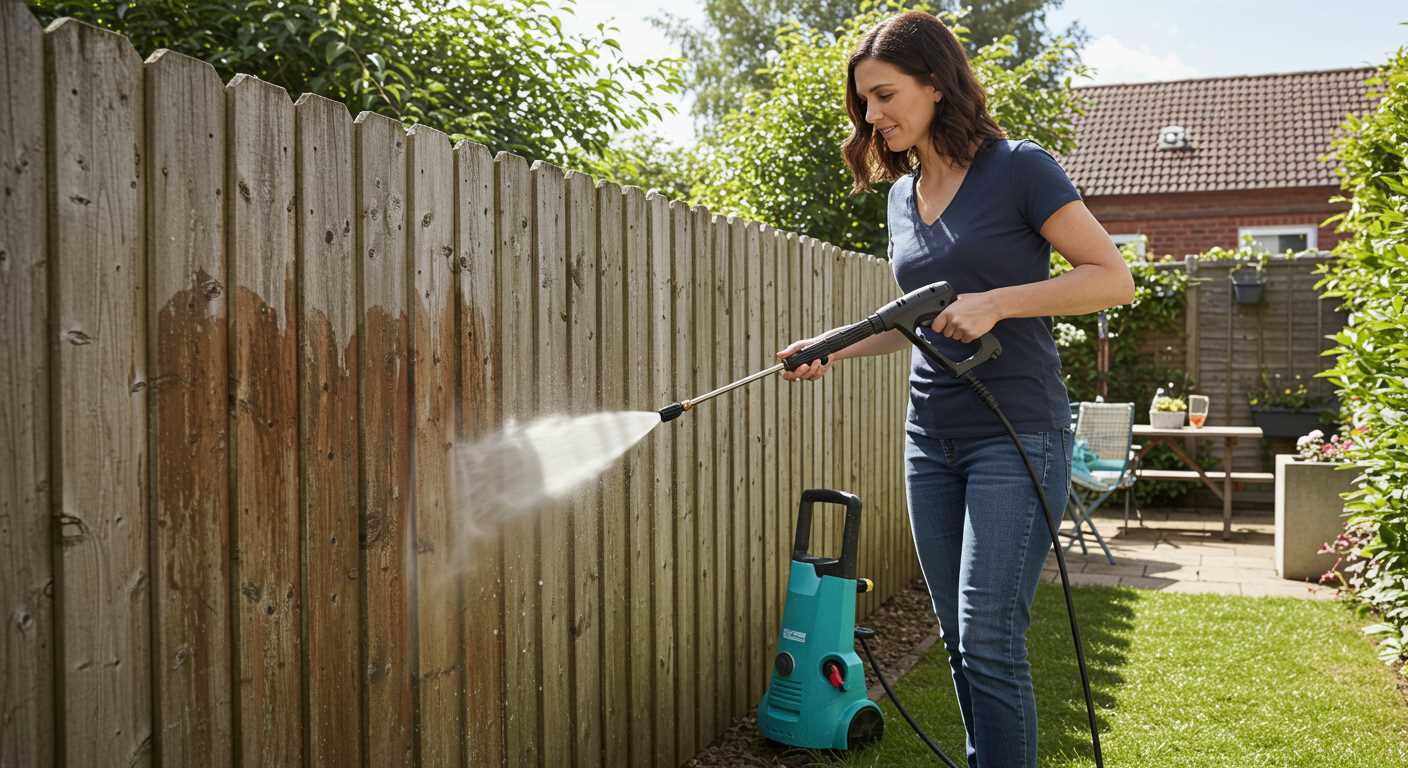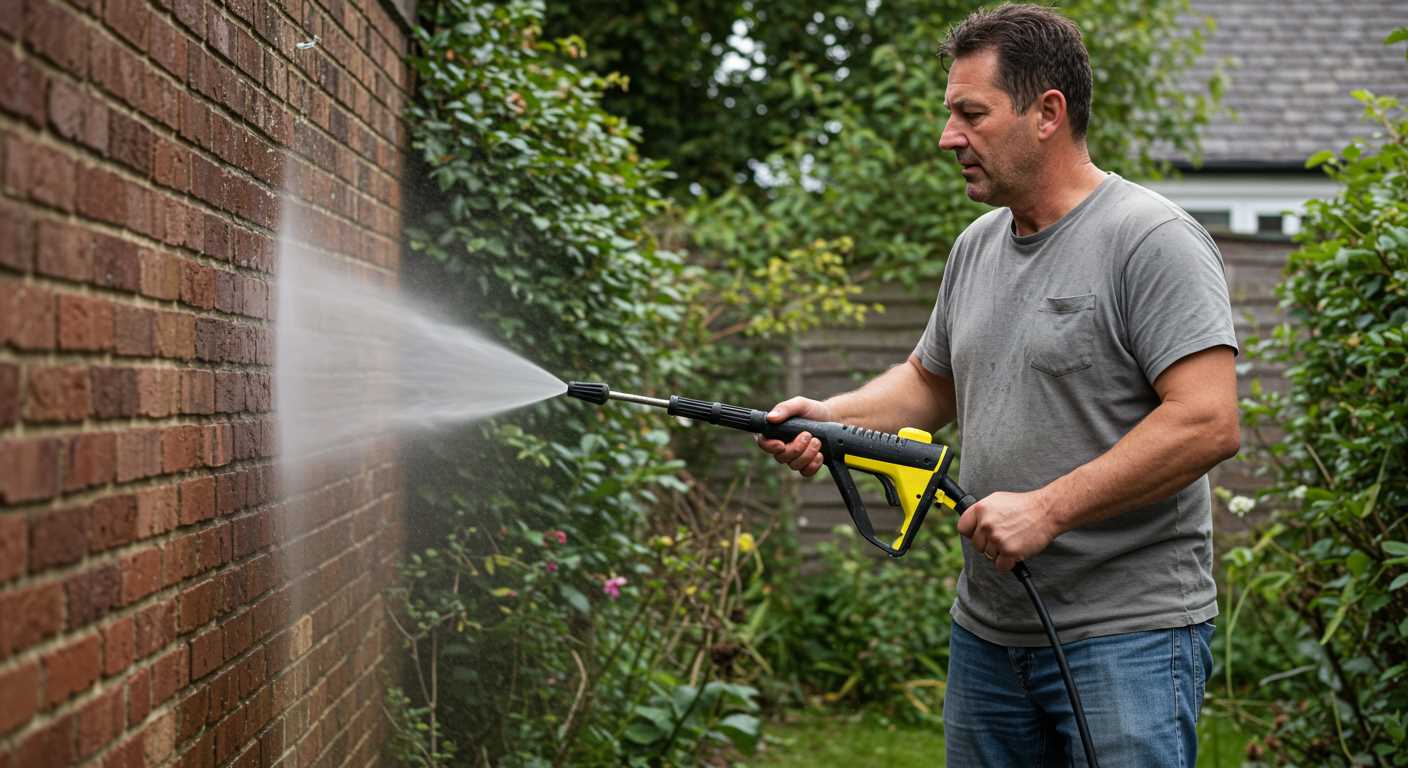



A high-pressure cleaning device can effectively tackle grease residue on driveways. While it may not always guarantee complete eradication in one go, its robust force does play a significant role in loosening stubborn marks. With the right technique and supplementary products, you can significantly improve the appearance of your surface.
Begin by pre-treating the greasy areas with a quality degreaser. Allow it to penetrate for the recommended time, usually around 15 to 30 minutes. This step is crucial as it helps break down the compounds embedded in the surface. Once the pre-treatment is complete, utilise the cleaning apparatus with a fan spray nozzle. This setting is optimal for dispersing water across a larger surface area, ensuring even coverage and heightened efficiency.
Consider using a hot water model, as the elevated temperatures can enhance the effectiveness of your cleaning process, making it easier to lift residues. Maintain a safe distance of approximately 12 to 18 inches from the surface to prevent damage while still allowing the powerful stream to work its magic. Regularly inspect the area, repeating the process as necessary for persistent blemishes. With patience and effort, your driveway can regain its original look.
Removing Difficult Marks with High-Pressure Cleaning Equipment
Using high-pressure cleaning equipment can significantly improve the appearance of a driveway or patio plagued by tough marks. Most units with adequate PSI (pounds per square inch) ratings–typically a minimum of 1500-3000 PSI–can tackle initial treatments effectively. However, not all devices are created equal when addressing this stubborn issue.
Tools and Additives
To enhance results, it’s advisable to incorporate appropriate cleaning agents specifically designed for greasy residues. Products containing bio-enzyme formulations work well, breaking down persistent grime. Apply these solutions before using the machine for optimal results; a dwell time of around 15 minutes can facilitate effective breakdown.
Then, proceed with the high-pressure equipment, ensuring nozzles are selected to create a concentrated stream, usually found in rotating or turbo configurations. Always maintain an optimal distance of around 12 inches from the surface to avoid damaging the texture while ensuring thorough clean-up.
Technique Matters

Adopt a systematic approach when cleaning. Start from the outer edges, working inwards to prevent any redeposition of debris. Move with steady, overlapping strokes for uniformity. Additionally, keep an eye on the surface for any lingering signs; multiple rounds or repeat applications may be necessary for complete eradication of challenging blemishes.
In summary, while achieving spotless surfaces can be a challenge, employing the right techniques and products maximises the potential of high-pressure devices, leading to significantly improved results.
Understanding How High-Pressure Cleaners Function on Contaminants
For best outcomes in tackling challenging marks, consider a model with adjustable pressure settings. High pressure effectively dislodges embedded impurities, while lower settings can pre-treat delicate surfaces. This flexibility allows for a tailored approach based on the severity of the blemish.
Water Temperature and Detergents
Utilising hot water significantly enhances the efficacy of the cleaning process. Heating the water aids in breaking down greasy residues, thus allowing the forceful water jets to penetrate deeper. Combining hot water with appropriate biodegradable detergents can yield remarkable results, especially for sticky or stubborn substances. Ensure to select a detergent that is compatible with your equipment to avoid any damage.
Technique and Angle of Application
The angle at which the concentrated stream is applied plays a pivotal role. Approaching the marks at a distance of around 6 to 12 inches keeps the surface intact while providing effective cleaning action. Maintain an angle of around 45 degrees to maximise surface contact and avoid directing water directly at joints or seams, which could lead to unwanted water ingress.
Types of Oil Stains Commonly Found on Concrete
Several varieties of greasy marks can afflict solid surfaces, each requiring a specialised approach for effective cleaning. Understanding these differences is essential to select the right method for tackling them.
1. Engine Oil
This type of residue is often encountered in garages or driveways, typically resulting from vehicle maintenance. Engine oil is known for its dense texture and ability to penetrate deep into the surface, which complicates its elimination. Quick action is recommended, as older stains become increasingly challenging to eradicate.
2. Cooking Oil

Spills from barbecues or outdoor cooking setups can lead to troublesome patches on patios and walkways. Unlike engine oil, cooking oil tends to spread more readily, creating larger but often less durable blemishes. It’s advisable to clean these promptly to avoid long-lasting discolouration.
| Type of Grease | Common Sources | Best Cleaning Method |
|---|---|---|
| Engine Oil | Vehicles, machinery | Degreaser followed by high-pressure cleaning |
| Cooking Oil | Outdoor grills, kitchens | Absorbents and hot soapy water |
Gear oil and transmission fluid are additional offenders found in specific settings, such as repair shops. Each type of contamination presents unique challenges, making it crucial to identify the residue before initiating cleansing techniques.
Best Practices for Preparing Concrete Before Washing
To achieve optimal results, proper preparation of the surface is crucial. Here are steps I recommend:
- Clear Debris: Remove all furniture, plants, and any loose items from the area.
- Sweep Thoroughly: Sweep the surface to eliminate dirt, dust, and any small particles that may hinder the cleaning process.
- Pre-Treat Heavy Soiling: Identify heavily soiled areas and apply a suitable degreaser or cleaning solution according to the manufacturer’s instructions. Allow it to sit for the specified time to break down tough residues.
- Rinse Away Loose Material: Use a hose to rinse the surface lightly, helping to remove preliminary grime and facilitate a better deep clean.
- Check for Damage: Inspect the surface for cracks or damage. Repair any significant issues prior to initiating the cleansing process, as these can affect both the equipment’s performance and the overall result.
- Protect Surroundings: Cover plants, lights, and any other items that might be damaged by overspray or cleaning solutions. Use plastic sheeting or tarps as necessary.
- Ensure Safety: Wear appropriate personal protective equipment (PPE), including gloves and goggles, to protect yourself from any chemical exposure or debris during the cleaning process.
By adhering to these steps, the effectiveness of the cleaning will be significantly enhanced, leading to a more satisfactory outcome.
Selecting the Right Pressure Washer Settings for Oil Removal

To tackle those tough marks effectively, I recommend setting the nozzle to a 25-degree spray angle. This strikes a balance between force and coverage, ensuring that the water reaches the surface without causing damage. For particularly stubborn spots, you can reduce the angle to 15 degrees, but be cautious of how close you get to the surface.
Adjusting Pressure Levels
For most cases, a pressure level between 2000 and 3000 PSI works best. Lower PSI levels of around 1500-2000 can suffice for lighter marks, while more extensive, ingrained remnants may require the full force. Always start at a lower setting and gradually increase to prevent any unintended surface harm.
Temperature Considerations
Using hot water significantly boosts cleaning power. If your equipment supports it, opt for a hot water setting to help break down grease and enhance results. Aim for temperatures around 150-200 degrees Fahrenheit; this range is effective without risking damage to the surrounding material.
Finally, using the right cleaning solution is paramount. Incorporate an appropriate degreaser into the process, especially for challenging marks. Spray or mix it according to the manufacturer’s instructions before applying water pressure for optimal outcomes.
Additional Cleaning Agents to Use Alongside Pressure Washers

For optimal results while tackling stubborn blemishes, incorporating specific cleaning solutions is beneficial. Here are some recommended agents that enhance the cleaning process:
- Biodegradable Degreasers: These are formulated to break down grease effectively without harming the environment. Look for products specifically designed for heavy-duty applications.
- Concrete Cleaners: Solutions containing phosphoric or hydrochloric acid can be used to penetrate and lift embedded grime. Ensure proper dilution according to the manufacturer’s instructions.
- Enzymatic Cleaners: These work by breaking down organic matter, making them useful for tackling residues. They are especially useful when used as a pre-treatment before washing.
- Dish Soap: A mild detergent can help in loosening light contaminants. Mix with water and apply before the high-pressure cleaning phase.
- Oxygen Bleach: Oxygen-based powders are effective for removing discoloration and light blemishes when mixed with water. They are safer for the environment and offer excellent cleaning power.
When using any cleaning agent, always conduct a patch test on a small, inconspicuous area first. Adhering to the recommended dwell time is also crucial for ensuring the best results before the application of high-pressure techniques.
Finally, remember to follow all safety precautions, including protective gear and proper ventilation when using chemical agents.
Post-Cleaning Maintenance Tips for Concrete Surfaces
Regular sealing of concrete is advisable to protect against weather and chemical damage. A high-quality sealant forms a barrier that prevents absorption of substances, facilitating easier cleaning in the future.
After any cleaning session, inspect the surface for remaining contaminants. This ensures that any stubborn residues are addressed promptly, preventing long-term staining.
Avoid harsh abrasive cleaners that can scratch the surface. Instead, opt for mild detergents that are designed specifically for concrete care, maintaining its finish and integrity.
Routine sweeping helps to prevent dirt accumulation and protect the surface from traffic-related wear. For best results, use a broom or blower to clear debris regularly.
Consider applying a restorative treatment every few years; this can rejuvenate the surface and address any minor wear and tear. Following manufacturer instructions will yield optimal results.
Monitor for cracks or chips after cleaning. Promptly addressing these imperfections with appropriate fillers can prevent further damage and prolong the lifespan of the pavement.
Establish a seasonal maintenance schedule. Plan to clean and assess the condition of your surface at least twice a year, ideally before and after winter.
Finally, keep a record of all maintenance activities performed. Documenting when cleaning and sealing occurred, along with any relevant observations, will assist in managing the upkeep effectively.









